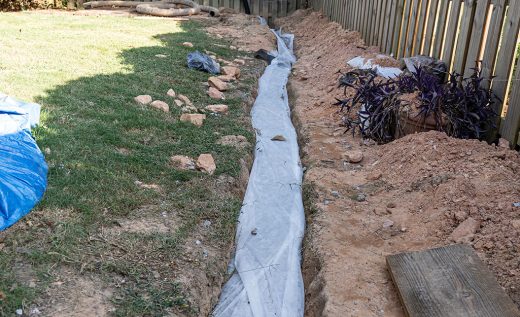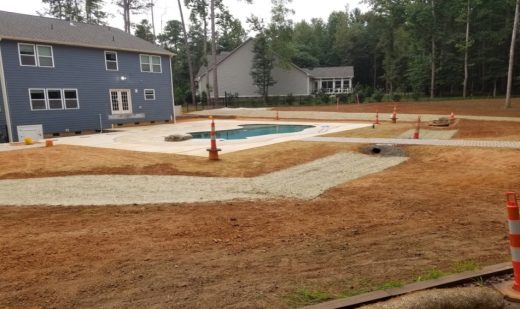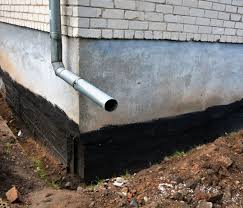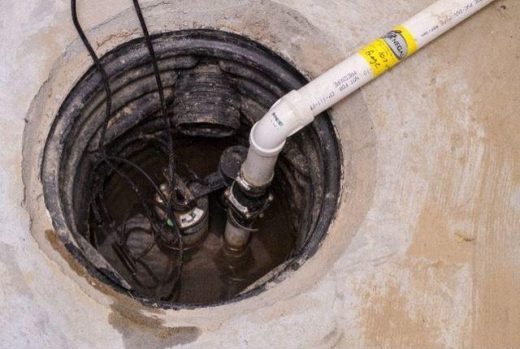Introduction:
Foundation drainage is an important part of making a home waterproof. Without some foundation drain, the foundation will be open to too much water and eventually break down and become damaged. There are different kinds of foundation drainage; all can be put in when the base is put in. Foundation drains can sometimes be added after the fact to fix problems with water pooling.
What is Foundation Drainage?
Foundation drainage is a drain placed at the base of a building to keep water from getting around it. Base drains are put in at the same time as the footing when the building base is being built. Also, foundation lines use trenchless technology, meaning the land’s surface changes as little as possible. The main purpose of a foundation drain is to collect and drain groundwater from around the building’s base so that water doesn’t pool or stand there.
Drains are made of a pipe with holes around the base and holding up the foundation wall. Also, the foundation wall catches drains. It either catches the basin or soaks the pit at a distance from the building.
Importance of Foundation Drainage:
Foundation drainage is crucial for the long-term stability and integrity of a building’s foundation. It refers to the system that manages water flow away from the foundation, preventing water accumulation and potential damage.
Here are some key reasons why foundation drainage is important:
(i) Moisture Control: Foundation drainage helps control the foundation’s moisture content. Excessive moisture can lead to soil expansion, exerting pressure on the foundation walls and causing them to crack or shift. By directing water away from the foundation, drainage systems prevent water from seeping into the soil surrounding the foundation and causing damage.
(ii) Prevention of Water Accumulation: Water accumulation around the foundation can lead to various problems. It can weaken the soil, cause hydrostatic pressure against the foundation walls, and result in water intrusion into the basement or crawl space. Proper foundation drainage helps to prevent water from pooling around the foundation and reduces the risk of these issues.
(iii) Structural Stability: A well-designed foundation drainage system helps maintain the stability and structural integrity of the building. Minimizing soil movement and water-related problems, such as erosion and settling, helps prevent foundation movement or shifting, leading to uneven floors, cracks in walls or ceilings, and other structural issues.
(iv) Protection against Foundation Damage: Water is one of the primary culprits behind foundation damage. Excessive moisture can cause the soil to expand, leading to heaving or settlement of the foundation. Over time, this can result in significant damage that is expensive to repair. Drainage systems mitigate the risk of foundation damage by efficiently draining water away from the foundation.
(v) Preservation of Indoor Air Quality: Water accumulation in the basement or crawl space can create a damp environment, leading to mold, mildew, and other moisture-related problems. These issues not only affect the structural components but also impact the indoor air quality of the building. Proper foundation drainage helps to keep the foundation area dry, reducing the risk of mold growth and maintaining a healthier indoor environment.
Types of Foundation Drainage:
1. French Drain:

Fig 1: French Drain
Courtesy: homedepot.com
A French drain is a type of drainage system commonly used to divert water from an area, particularly around buildings or landscaping. It is made up of a hole filled with dirt or rocks and a pipe with holes in it. The purpose of a French drain is to collect and redirect excess water to prevent water accumulation and potential damage.
A trench is dug along the desired path where water needs to be diverted. The trench is usually sloped to allow for proper water flow. The bottom of the trench is lined with gravel or rock. This layer serves as a collection area for water and helps to facilitate drainage. Perforated pipe installation: A perforated pipe is laid at the gravel or rock layer. The pipe has small holes or slots that allow water to enter it, preventing soil and debris from clogging. Covering the pipe: Once it is in place, more gravel or rock is added, ensuring it is surrounded by a porous material that allows water to flow freely. The trench is then backfilled with soil, and the area is restored to its original state, making the drain system inconspicuous.
When it rains or excessive groundwater, water seeps into the ground and enters the French Drain through the perforated pipe and the surrounding gravel or rock. The Drain then redirects the water away from the desired area, such as a building foundation or a low-lying section of a yard, preventing water damage and helping to keep the area dry.
2. Grading Drainage:

Fig 2: Grading Drainage
Courtesy: nnodez.com
Grading drainage refers to shaping and contouring the land or site to ensure proper water drainage. It involves manipulating the slope and elevation of the land to direct the water flow away from structures, roads, and other areas that should remain dry. Grading drainage is an essential component of site development and is typically performed during the construction or renovation of a property. The primary goal of grading drainage is to prevent water from accumulating and causing problems such as flooding, erosion, or damage to structures. It helps to manage storm water runoff by providing a path for water to flow away from the site or into appropriate drainage systems.
The process of grading drainage involves various techniques, such as cutting and filling soil, creating swales or channels, installing drainage pipes, and constructing retaining walls or berms. These measures ensure that water flows naturally and effectively away from the site, minimizing the risk of water-related issues.
3. Footing Drainage:

Fig 3: Footing Drainage
Courtesy: excavationcontractorsct.com
Footing drainage is a system designed to prevent water from accumulating around the foundation of a building. It is an essential component of a well-designed foundation system, particularly in areas with high water tables, heavy rainfall, or poor soil drainage. The purpose of footing drainage is to redirect water away from the foundation and prevent it from seeping into the ground near the building. Water collecting around the foundation can cause various problems, including soil erosion, hydrostatic pressure, and basement or crawl space flooding. Over time, this can lead to structural damage and compromise the stability of the building.
A typical footing drainage system consists of a perforated pipe installed alongside the foundation footings, usually made of PVC or HDPE. This pipe is laid in a bed of clean gravel or crushed stone, which serves as a filter and allows water to flow freely into the pipe. The pipe is sloped to ensure proper drainage, and it is connected to an outlet, such as a sump pump or a storm drain, to direct the water away from the foundation. The perforations in the pipe allow water to enter the pipe and be carried away, preventing it from accumulating near the foundation. The gravel or crushed stone around the pipe acts as a barrier, preventing soil particles from clogging the perforations and impeding the water flow.
4. Sump Pit and Pumps Drainage:

Fig 4: Sump Pit and Pump Drainage
Courtesy: gothrasher.com
A sump pit is a small pit or basin in the lowest part of a basement or crawl space. Its purpose is to collect water that enters the area through natural groundwater infiltration or drainage from plumbing fixtures, such as washing machines, sinks, or water heaters. Sump pits are typically constructed from concrete, plastic, or fiberglass and are equipped with a sump pump.
The sump pump is installed in the sump pit to remove the water accumulating in it. When the water level in the pit reaches a certain threshold, the sump pump is activated automatically or manually. It removes groundwater from the pit and channels it away from the structure to stop any potential flooding or structural damage.
Design of Foundation Drainage:
(i) Code Requirements for Drainage
Depending on where your home is made, the drainage code can differ. One of the most common rules is that the Drain must go at least 12 inches past the edge of the footing. These drains may be bigger than you first thought so that more water can flow through them. Also, some building rules say that the top of the Drain must be at least six inches higher than the top of the footing.
(ii) Materials for Drainage:
Most drains are PVC pipes, and dirt or rock surrounds them to help water flow. Even though it is a pipe, the pierced drain pipe is also called a drain tile.
(iii) Drainage Boards:
Drainage boards make it easy for water to get to a grounding drain. Sometimes, the drainage board is called a drainage mat. If you don’t use drainage boards when building the base, water from the drains can get stuck around the concrete. The holes in these boards let the water run off instead of pooling.
(iv) Moisture:
The soil’s moisture content near the base greatly impacts how water drains from the footing. The moisture content depends on the type of soil used.
(v) Trees:
Tree roots can make it hard to build a foundation drainage system, and they can also cause problems in the long run. Tree roots have been known to grow into drainage lines, make holes, and block them up. Using that geotextile cloth can be helpful, but only sometimes.
(vi) Placement of Foundation Drainage Pipes:
The placement of basement drainage pipes is another important thing to think about. One of the key things to look at here is the gutters. Homes should have some base drainage system around the whole house. But in areas where a downspout drains, you may need different methods to ensure the water doesn’t pool.
Advantages of Foundation Drainage:
- Water can’t pool up and cause damage to a building’s structure with proper foundation drainage.
- It minimized the prospect of a legal resolution.
- It’s useful for preventing soil from washing away.
- Draining the water away from the foundation helps prevent the growth of harmful organisms and the accumulation of hazardous substances.
- Weeping in the foundation can be mitigated by proper drainage.
Disadvantages of Foundation Drainage:
- The price of installing floor drains can be higher than expected.
- To properly install a basement drain, you need to hire people who know what they are doing.
- Things like the sump pump will need to be replaced and kept regularly.
- The drains can get stuck and need changes or fixes to help them last longer.
- Moving water into the sewer system can cause runoff problems with pollution and environmental worries.
Conclusion:
Foundation drainage is a vital element of building construction, helping to safeguard the foundation and prevent water-related problems. By implementing an effective foundation drainage system, excess water is directed away from the foundation, reducing the risk of damage and maintaining the structural integrity of the building. It is essential to consult with professionals such as civil engineers or foundation specialists to assess the specific drainage needs of a building based on its location, soil conditions, and local climate.
References:
1. Biermeier, D. (2023, January 18). Your Ultimate Foundation Drainage Guide: Types, Design and Components. Forbes Home. https://www.forbes.com/home-improvement/plumbing/foundation-drainage/
2. Olizarowicz, B. (2022, October 13). Foundation Drainage: Types, Design, and Components – Today’s Homeowner. Today’s Homeowner. https://todayshomeowner.com/foundation/guides/foundation-drainage/
3. The 4 Best Foundation Drainage Solutions – Crawlspace Medic. (2021, July 20). Crawlspace Medic. https://crawlspacemedic.com/the-4-best-foundation-drainage-solutions/
4. P. (2022, June 13). Foundation Drainage – what why how – Structural Guide. Structural Guide. https://www.structuralguide.com/foundation-drainage/
5. 4 Types of Foundation Drainage [Pictures]. (2023, March 13). Perma Pier. https://permapier.com/blog/foundation-drainage-types/
6. The Definitive Guide to Foundation Drains & Footing Drains. (2021, May 26). Enviro Design Prk0lkloducts. https://www.envirodesignproducts.com/blogs/news/the-definitive-guide-to-foundation-drains-footing-drains
If you have a query, you can ask a question here.


